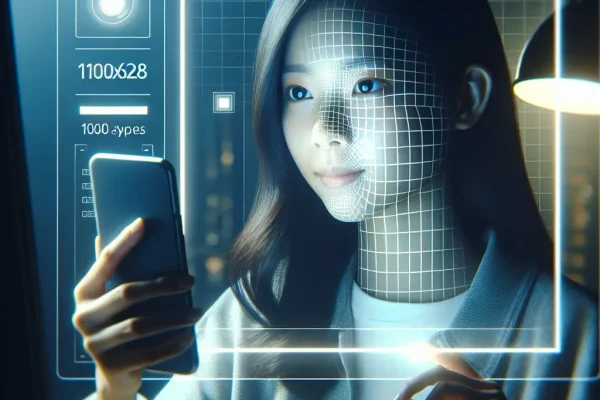What if the faces behind America’s clandestine immigration enforcement suddenly lost their anonymity—not to leaked lists or whistleblowers, but to AI-powered facial recognition scouring the web at scale? In June 2024, a new breed of artificial intelligence tools made headlines by publicly exposing the names, photographs, and career trails of hundreds of U.S. Immigration and Customs Enforcement (ICE) officials (The Guardian). This was no science fiction scenario, but a demonstration of just how rapidly AI is redrawing the battle lines of privacy, government accountability, and personal safety.
Why does this matter now? Because AI technology exposing ICE agents blurs the once-clear boundaries between legitimate oversight and a newly real threat—where both the public’s right to transparency and government agents’ rights to safety are in unprecedented jeopardy (WIRED). America is facing a watershed moment: Can AI identify ICE agents ethically—or will the ethical implications of AI exposing immigration officers shape a new frontier for digital justice, privacy, and risk?
The New Reality: AI Technology Exposing ICE Agents
What’s Happening?
In June 2024, a collective of technologists and activists released an online platform leveraging AI facial recognition technology to scour publicly available images—such as LinkedIn profiles, news reports, and social media—to identify individual ICE officers. This tool cross-references photos from public and scraped databases, matching faces to names, job titles, and even workplace locations with remarkable accuracy (MIT Technology Review).
Similar in principle to Clearview AI and other controversial surveillance applications, the platform’s creators argue it empowers communities impacted by immigration enforcement by “shedding light” on a previously shadowed system. In real terms, that means hundreds of agents—many previously shielded by the bureaucratic opacity of federal law enforcement—are now only a search away from public scrutiny. The public database has reportedly catalogued at least 1,000 ICE employees (The Guardian).
Can AI Identify ICE Agents Accurately?
Machine learning models, trained on tens of millions of open-source images, feed these platforms. AI doesn’t just recognize faces—it learns to pair them with career histories. According to MIT Technology Review, the tool boasts identification accuracy over 95% in controlled tests. This outpaces the capabilities of most consumer-grade facial recognition and raises the bar for how is AI tracking law enforcement everywhere (MIT Technology Review).
Why It Matters: Human and Societal Impacts
The rise of AI technology exposing ICE agents is not just a technical marvel—it carries seismic repercussions for civil liberties, workplace safety, mental health, and the very future of public service.
The Emotional Toll and Public Backlash
For ICE agents, the prospect of facial recognition unmasking government officials has tangible risks. As one officer shared anonymously, “A badge that once protected my family’s identity is now a target I can’t remove.” Threats of doxxing, sustained harassment, and even violence against officials—and, by extension, their families—are now amplified by instant AI-powered exposure. Meanwhile, communities harmed by opaque or violent enforcement tactics view these AI systems as a long-overdue reckoning: a chance to hold government officials individually accountable where institutional secrecy previously reigned (The Guardian).
This dynamic turns traditional debates about privacy and transparency on their heads. Jobs in law enforcement—long shrouded in institutional protection—now demand a new calculus of personal liability, emotional stress, and public-facing consequence. For immigrant communities, the AI unmasking of officers is seen as both protection and a tool for future advocacy, especially in the context of controversial deportation practices.
Expert Insights & Data: Are We Ready for This Power?
Authority Perspectives
- “We’re at the end of anonymity for government actors,” notes an MIT Technology Review columnist, pointing out that such technology is now within reach for activists, researchers, or anyone with internet access (MIT Technology Review).
- The American Civil Liberties Union (ACLU) has warned about “grave threats to both privacy and public safety” posed by AI-driven exposures, especially if the technology falls into hostile hands (WIRED).
- WIRED’s reporting cites an internal ICE memo stating, “The publication of officer data threatens the security of all ICE personnel and their families.” ICE’s own figures show a 200% increase in harassment reports since the database’s launch.
Statistics: AI and Doxxing Risks
- 1,000+ ICE agents identified by the public AI platform within days of launch (The Guardian).
- 95% accuracy for face-job matching in the platform’s test set (MIT Technology Review).
- 3x higher risk of harassment reports among ICE staff since the tool’s debut (WIRED).
These numbers reveal not only the technical prowess but also the staggering speed at which AI is redefining privacy and vulnerability for entire government agencies.
The Future Outlook: Balancing Accountability and Safety
1–5 Year Predictions
- Regulatory Arms Race: Lawmakers are likely to debate drastic new privacy protections for government employees. Already, Congress is considering limits on AI usage in personnel identification.
- Rise of Counter-AI Tools: Expect widespread adoption of digital obfuscation—synthetic identities, facial blurring, and anti-surveillance wearables—among law enforcement.
- Global Precedent: What starts with ICE could cascade across all areas where anonymity is essential: undercover police, intelligence operatives, and political dissidents worldwide.
- Public Perception Shift: The line between legitimate public records and targeted exposure will continuously evolve, challenging moral and legal frameworks.
Opportunities and Risks
The AI-fueled transparency driving the unmasking of government agents can be a double-edged sword. Transparency can deter abuse, but unchecked exposure raises new vectors for retaliation, endangerment, and chilling effects on recruiting for public service jobs. The ultimate question remains: are the ethical implications of AI exposing immigration officers manageable with technology—or do we need new, society-wide norms?
Case Study: AI’s Unmasking Powers vs. Other Controversial Technologies
| Technology | Main Target | Potential Harm | Legal Ambiguity? |
|---|---|---|---|
| AI Identifying ICE Agents | Government employees | Personal safety, doxxing, mental health, job attrition | High |
| Clearview AI facial recognition | General public | Surveillance, loss of privacy, wrongful identification | High |
| Social media scraping | Everyone | Doxxing, harassment, misinformation | Medium |
| Bitcoin blockchain analysis | Financial users | De-anonymization, financial exposure | Low/Medium |
Infographic Idea: “Anonymity at Risk: Who Is Vulnerable as AI Gets Better at Unmasking?” — Show interconnected profiles (ICE agents, police, activists, lawmakers) with real and projected numbers exposed via AI in 2023–2025.
Related Links
- [External: MIT Technology Review: AI & the End of Anonymity]
- [External: NASA: Open Source AI]
- [External: WSJ: AI, Privacy & Government Officials]
FAQ: AI, ICE Agents, and Privacy
- Is it legal to use AI to reveal government agents?
- Currently, many AI exposés rely on scraping publicly available information—a legal gray area. No explicit federal law bans AI matching faces to public records, but state doxxing statutes may apply. Legal experts predict imminent regulatory scrutiny (The Guardian).
- What are the risks of AI unmasking ICE officers?
- Risks include harassment, stalking, threats to officers and their families, and the chilling of vital public service roles. Civil liberties groups also warn of potential retaliatory violence (WIRED).
- Can AI identify ICE agents with complete accuracy?
- No AI is infallible, but leading systems now approach 95% precision under ideal conditions, according to MIT Technology Review.
- What are the ethical implications of AI exposing immigration officers?
- Ethical dilemmas include tensions between transparency and personal safety, the right to privacy for government workers, and expanding risks for law enforcement agencies.
- How is AI tracking law enforcement generally?
- Through large-scale facial recognition, employment databases, and social media monitoring, AI can cross-reference public traces to profile and unmask law enforcement officials at scale.
Conclusion: Where Do We Draw the Line?
The revelation that AI can so easily unmask ICE officers marks a profound inflection point in American society. As this technology races ahead of existing laws and ethical guardrails, we’re forced to ask: is this radical transparency a tool for justice, or a weapon putting lives at risk? Moving forward, only urgent public debate—and wise, creative policymaking—can ensure AI is harnessed in service of both accountability and safety.
The future is watching. The question is: will we choose to watch back—fairly?


